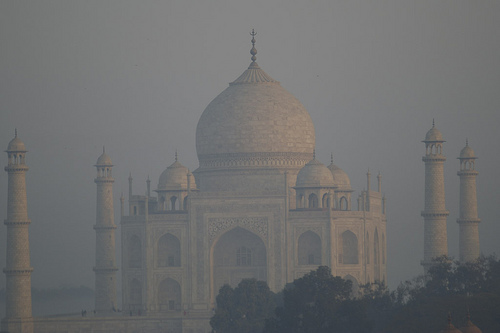In December this year, France will be hosting the United Nations Framework Convention on Climate Change, otherwise known as “Paris 2015” in order to achieve a new international agreement on the climate, applicable to all countries. India has a very small carbon footprint per capita, in fact, producing about one-tenth of the average American in terms of greenhouse gases. But take India’s small footprint and multiply that by 1.2 billion people and that is where you get your problem. On top of this, government planners think that, with economic growth of 8-9%, India’s total emissions of carbon dioxide would more than triple by 2030. India is on the way to becoming the biggest contributor to increases in greenhouse gases, a powerful reason for caring about its progress on environmental matters.
According to a 2014 World Health Organization report, India is home to 13 of the world’s 20 most polluted cities, with New Delhi declared as the world’s most polluted city. The cities fine particulate matter level, the concentration of tiny solid and liquid particles suspended in the air is almost three times that of Beijing, a city notorious for its bad air quality. This concentration can cause heart and lung problems when inhaled over a long period of time. Prime Minister Modi’s government has sent mixed signals about its stance toward climate change, adopting targets for renewable energy while at the same time pointing the finger of blame at richer nations for causing global warming.
Almost 200 countries have submitted their post-2020 action plan for the Paris Conference (Intended Nationally Determined Contributions) to combat the climate crisis. The conference is framed as a final chance to put the world on a more sustainable path. Unlike many other big countries, India refused to set a date at which the absolute amount of carbon it pumps out would peak and start to fall. Instead it promised that its carbon intensity, that is, carbon emissions per unit of GDP, would fall by a third before 2030. More controversially, coal will continue to dominate power generation, a point of friction with environmental groups that want the most polluting fuel phased out. Coal-based power currently accounts for almost 61 percent of India’s power generation capacity.
This reflects pressure to balance India’s needs for economic growth against its desire to clean up its most polluted cities. Following his meeting with Obama in New York on Monday, October 5, Modi said that they shared an “uncompromising commitment” to combat climate change, but it should not interfere with India’s goals of development and poverty eradication. “It’s the West which has polluted the world for the last 150 years with cheap energy,” Indian Power Minister Piyush Goyal said in an interview. “I can’t tell the people of India that we’ll burden you with high costs because the West has polluted the world, now India will pay for it. Not acceptable to us.”
India has 17.5 percent of the world’s population and has more poor people than anywhere else in the world, with 230 million living on US$1.90 a day or less. For the poor, growth is essential, and carbon comes with it. The country needs cheap power to aid development and India argues that with more than 20% of its population without access to electricity, they have a right to development. The country lags far behind in terms of economic development and it wants to catch up. In order to achieve that, it has to develop a manufacturing base, which will be powered by fossil fuel polluting factories. India’s plan states the following: “nations that are now striving to fulfill this right to grow of their teeming millions cannot be made to feel guilty for their development.”
However, there is not only development to consider but also the health effects caused by pollution as India has the highest rate of death from respiratory disease in the world, according to the WHO, with 159 per 100,000 in 2012 – twice that of China. Doctors claim that the sharp rise in cases of chest and throat disease is due to worsening air pollution in the country. It has occurred despite steady improvements in medical care and nutrition, as well as a shift away from using wood as fuel in rural areas. Globally, more than 3 million people die prematurely each year from prolonged exposure to air pollution and by 2050, it could be up to 6.6 million, a new study predicts.
Yes, there is hope for the future as India has shown that it can enact reforms that have a big environmental impact. In the past two years it has removed a subsidy on diesel consumption. The Indian government now subsidizes liquefied natural gas and provides cash payment for the poor, encouraging people to use gas less wastefully. New Delhi’s city government recently announced it would prohibit commercial cars on main roads for one day every month, starting on October 22, and will also introduce a 1,300 Rupee (US$20) tax on diesel-guzzling trucks entering New Delhi by the end of the year. Prime Minister Modi reiterated his commitment to “clean and sustainable energy” and announced plans to include “not just a plan to add 175 GW of renewable energy by 2022, but a development strategy that will enable us to transition to a more sustainable energy mix”.
India also has a “last mover” advantage with the ability to learn the lessons from the past and from other countries in building more efficient cities. With greater knowledge of the effects of climate change and advances in clean energy, it is the goal for the future that development will no longer be in competition with health and the environment.




